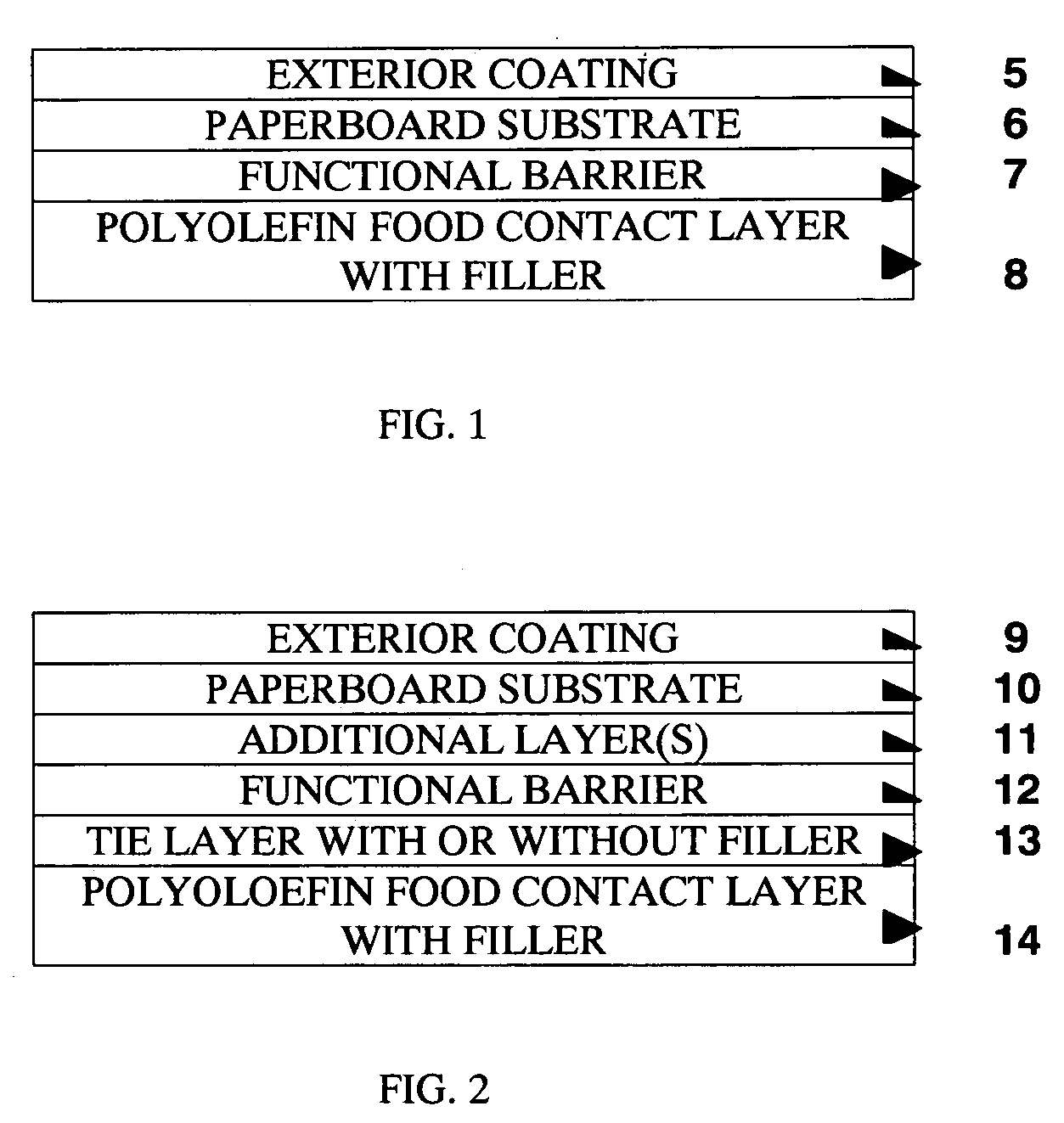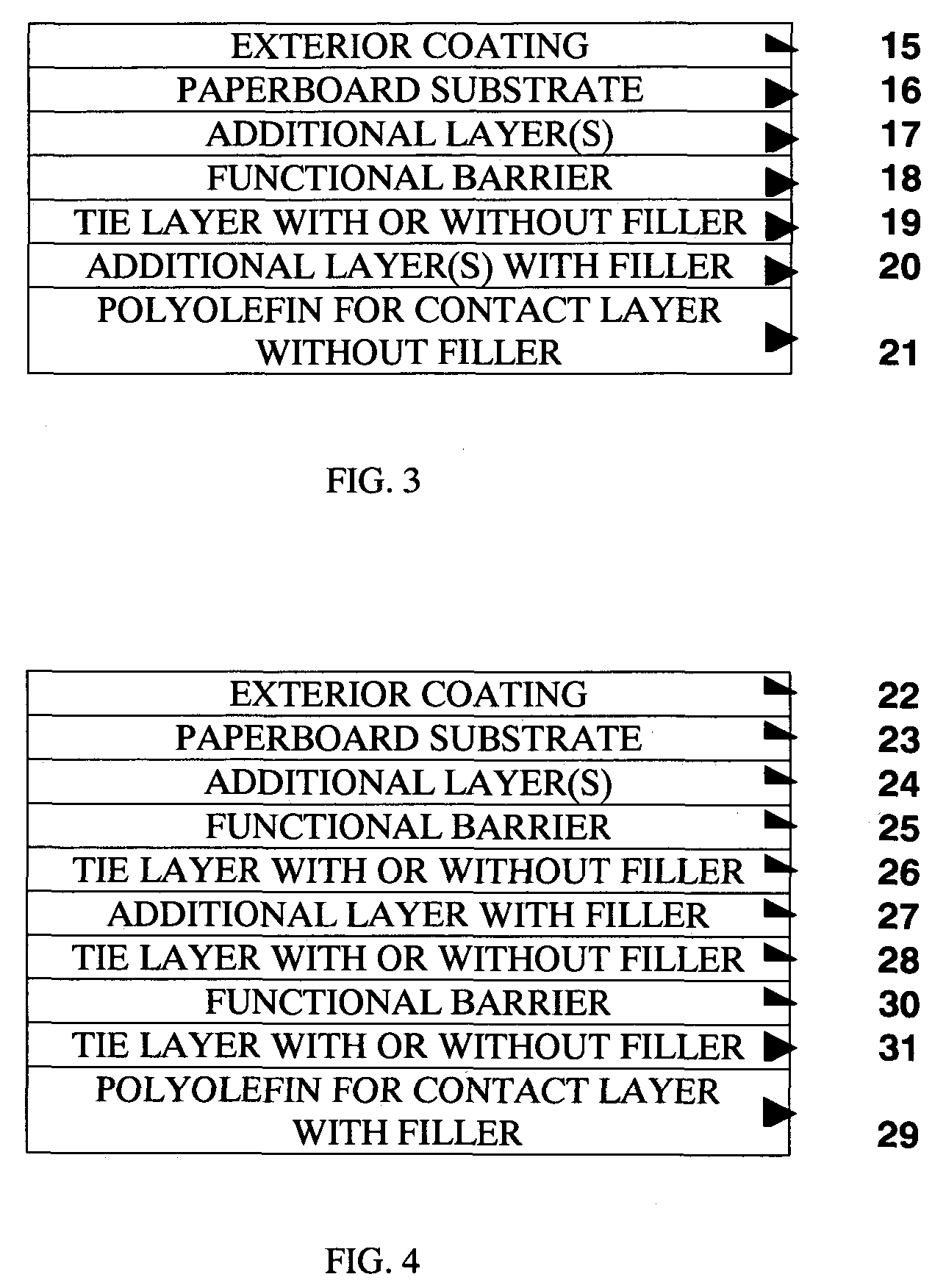Paperboard laminate for food packaging applications
a technology of food packaging and paperboard, applied in the field of paperboard laminate for food packaging applications, can solve the problems of affecting the quality of food packaging, and affecting the taste of food packaging,
- Summary
- Abstract
- Description
- Claims
- Application Information
AI Technical Summary
Problems solved by technology
Method used
Image
Examples
Embodiment Construction
[0011] The laminate structure of the invention can be used in laminates comprising a coated paperboard substrate for use in the production of containers and cartons for products such as juices, punches, milk and other beverages. Such multilayer laminate structures comprise a paperboard substrate, one or more functional barrier layers of aluminum foil, nylon, EVOH, or PET overlying the interior surface of the substrate, and one or more polyolefin layers overlaying the functional barrier layer, at least one of which has incorporated therein an inorganic particulate filler added. A tie layer may be provided and this tie layer may be provided with or without inorganic particulate filler. A layer of polyolefin is preferably coated on the exterior surface of the paperboard substrate.
[0012] The particulate filler useful for blending into food contact, sublayer(s) and tie layer can be an inorganic or organic material and is preferably a rigid material.
[0013] Specific examples of inorganic...
PUM
| Property | Measurement | Unit |
|---|---|---|
| Percent by mass | aaaaa | aaaaa |
| Fraction | aaaaa | aaaaa |
| Fraction | aaaaa | aaaaa |
Abstract
Description
Claims
Application Information
 Login to View More
Login to View More - R&D
- Intellectual Property
- Life Sciences
- Materials
- Tech Scout
- Unparalleled Data Quality
- Higher Quality Content
- 60% Fewer Hallucinations
Browse by: Latest US Patents, China's latest patents, Technical Efficacy Thesaurus, Application Domain, Technology Topic, Popular Technical Reports.
© 2025 PatSnap. All rights reserved.Legal|Privacy policy|Modern Slavery Act Transparency Statement|Sitemap|About US| Contact US: help@patsnap.com



